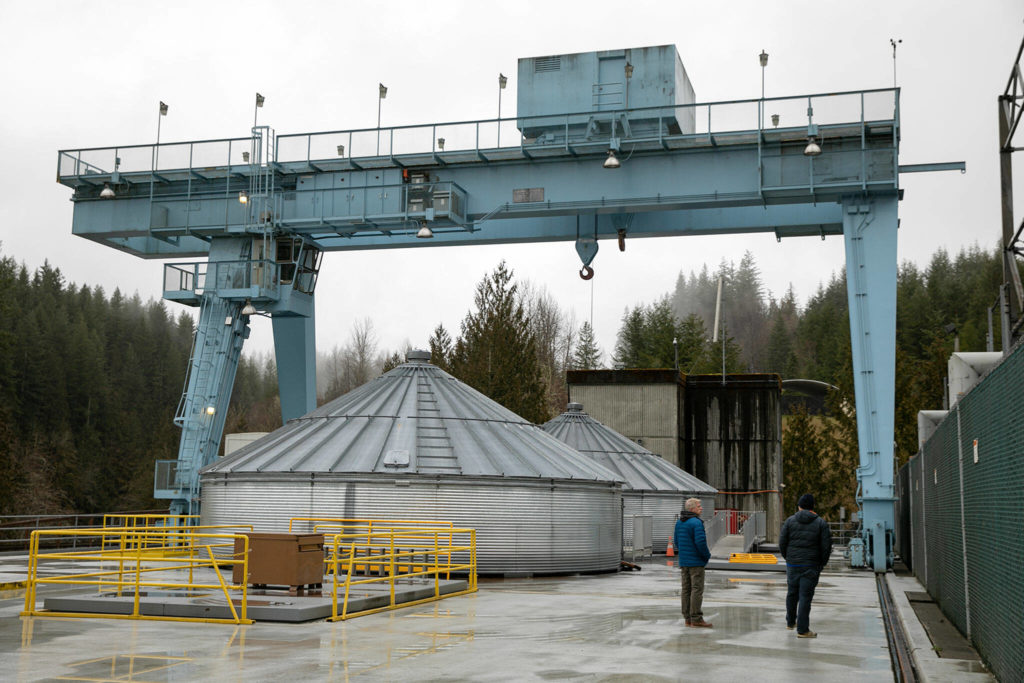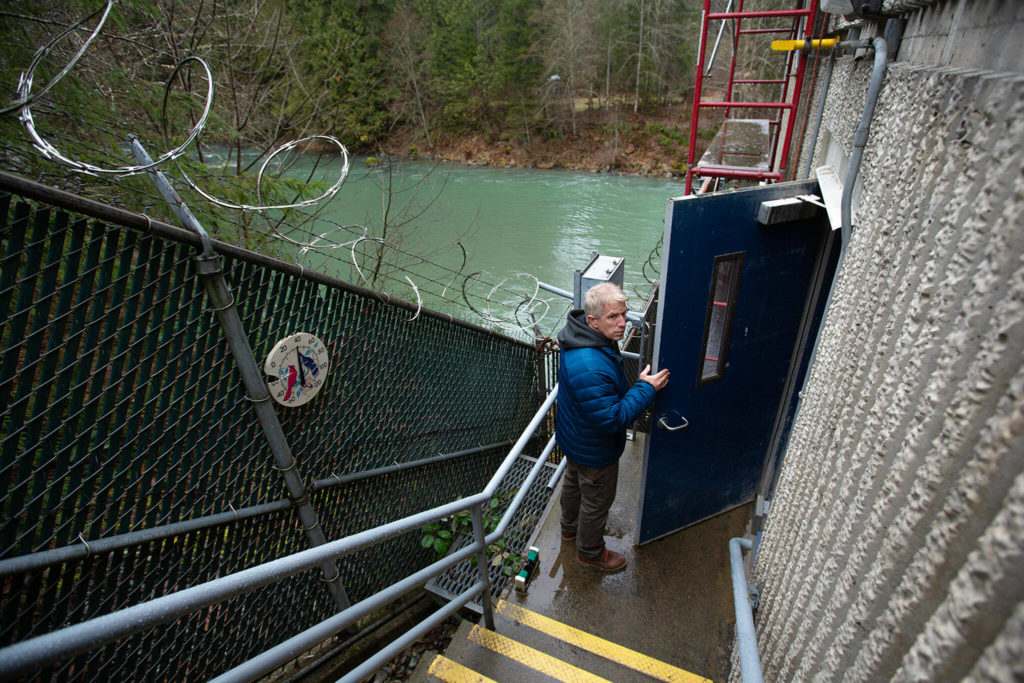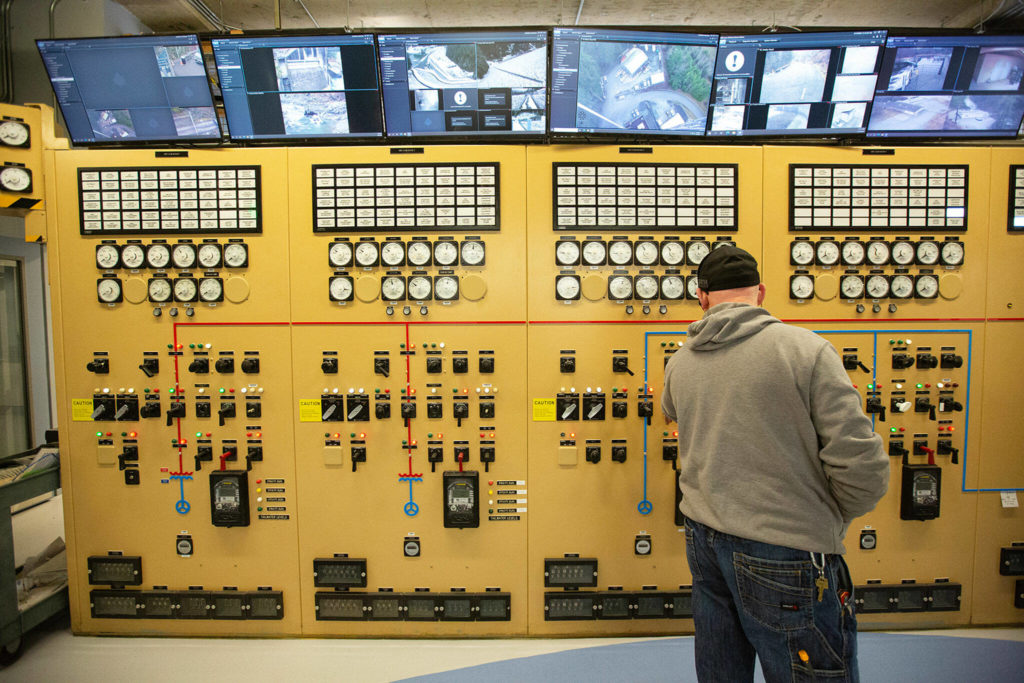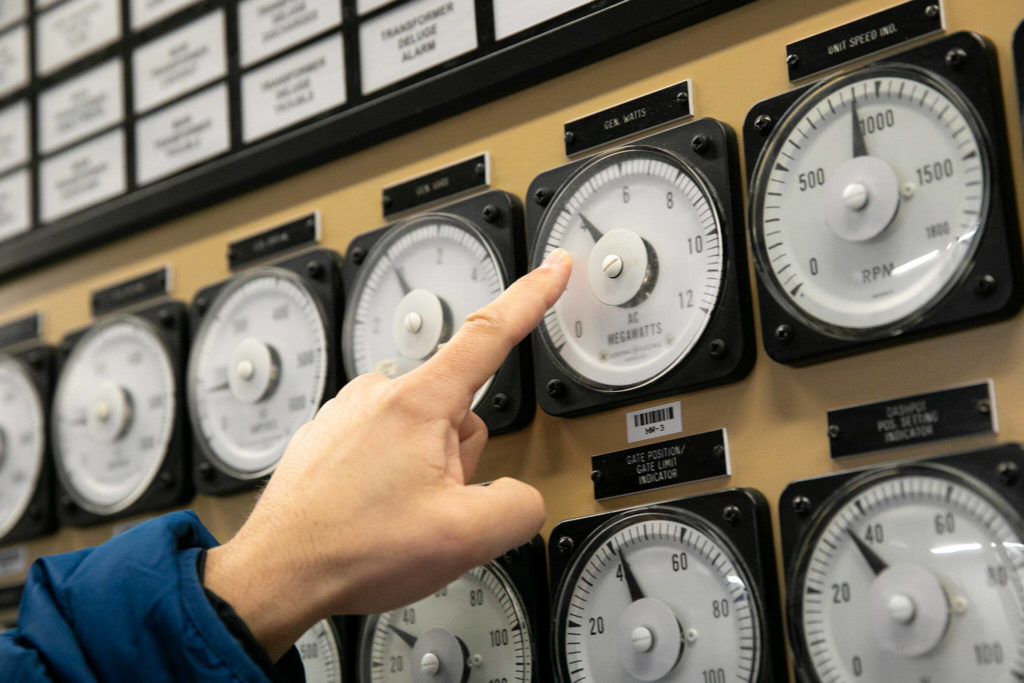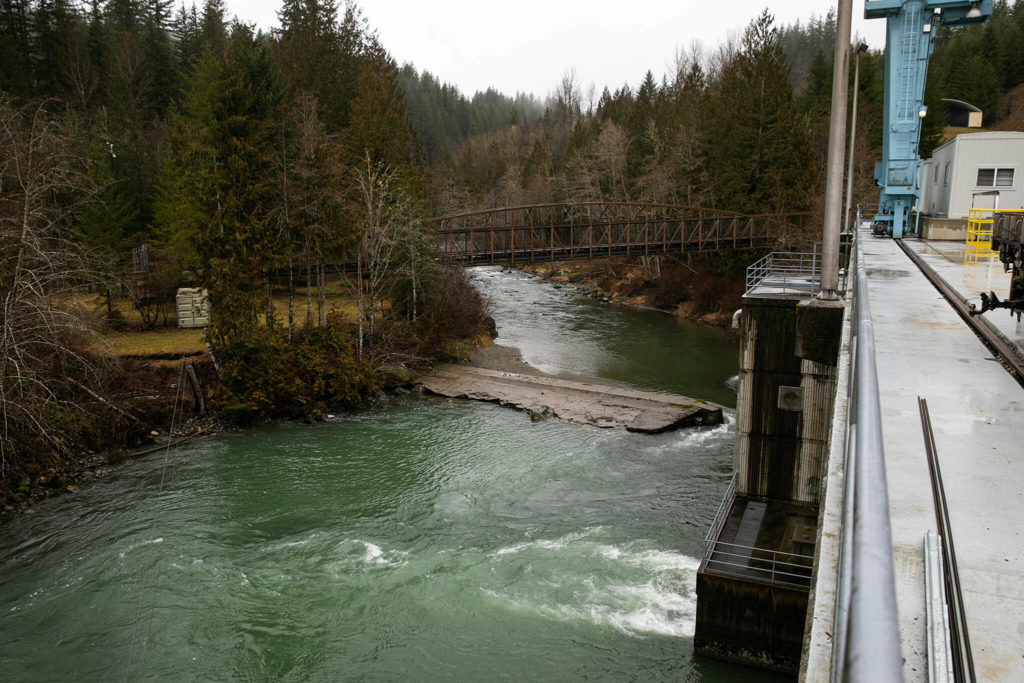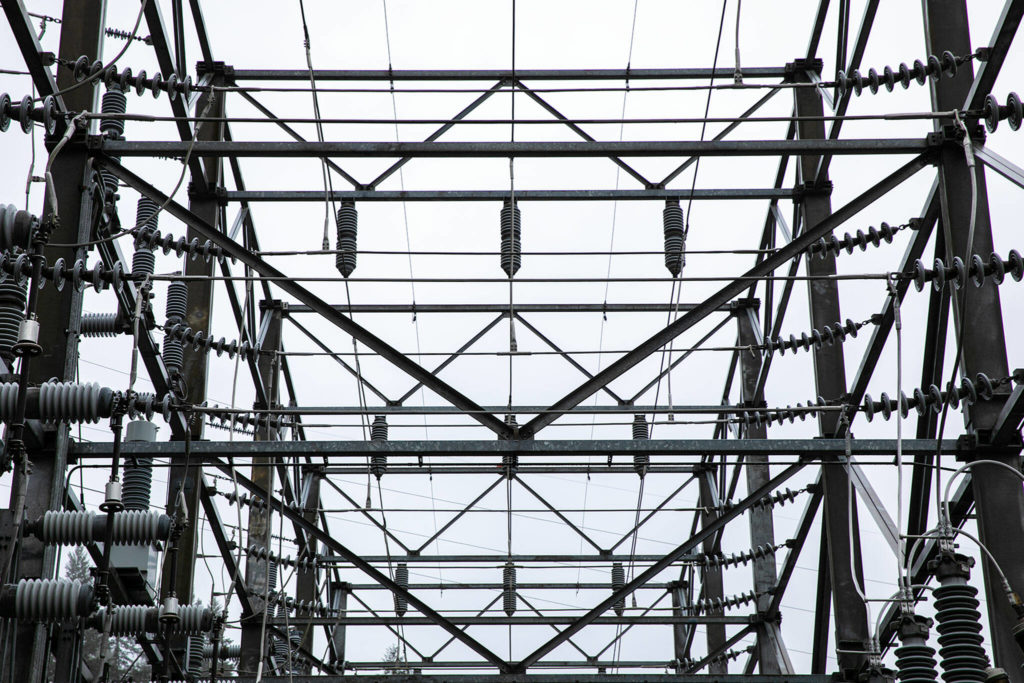SULTAN — Battery storage and consumer conservation are two of the main ways the Snohomish County Public Utility District’s could meet projected energy demand growth.
Higher electric vehicle sales, more home electricity use for cooling and heating and population growth led to ballooning energy demand estimates by utility staff last year.
“That’s going to have a big impact,” assistant general manager Jason Zyskowski told the commissioners during a Jan. 24 meeting.
Now staff are updating the long-range integrated resource plan to figure out what that demand looks like and if the district’s current supply can meet it. The Snohomish County Public Utility District (PUD) is hosting an open house about the plan at 5 p.m. Thursday at its headquarters at 2320 California St., Everett.
Garrison Marr, PUD senior manager of power supply, is confident the agency has the adequate supply to satisfy federal and state “clean energy” requirements over the coming two decades. Part of his optimism is the utility’s current rate of carbon-free electricity around 94%, the bulk of which is hydroelectric, nuclear and wind.
“Unequivocally, we will absolutely meet the demand,” Marr said. “We’re not super worried about it.”
The PUD’s supply of “clean” energy is higher than its annual total retail load, and the agency is a net exporter of carbon-free electricity, Marr said.
As the demand grows, it becomes a challenge to meet it all without adding new sources or managing energy use.
The PUD is looking at options for both, ever with an eye on limiting the need to buy energy from the market where prices can swing. Marr compared it to the uncertainty of gasoline prices on drivers.
Adding new power generation sources is costly. Solar and wind generation can help make up some of the additional supply with adequate storage.
Storing that supply in batteries would let the PUD access it to help meet demand. It’s one of the emerging technologies the PUD is evaluating as a potential piece of its energy future.
Staff are reviewing batteries with a 4-hour supply that can be stacked as a near-term energy storage option. Tax credits in the Inflation Reduction Act can help offset those costs.
“There has never been a better time to be developing new resources,” Marr said. “We just have the most options, costs have come down.”
While that technology develops and gets reviewed, the PUD leaders are focusing on the rollout of advanced meters that track almost real-time energy use. The agency could pursue reducing electricity use customer by customer with the data from the new meters.
Some programs could be rate incentives for people to use electricity during off-peak hours when demand is lower.
“Conservation has been, as long as I’ve been here, one of the important pieces,” said Michael Coe, principal utility analyst at the PUD.
In recent years, the PUD has seen an increase in energy conservation as more homes replace old incandescent bulbs with more efficient light emitting diode bulbs (LEDs).
But the Northwest Power and Conservation Council found there’s still “a lot of potential” for conservation, Coe said. An assessment by the council showed about 720 megawatts are available within four years through demand response such as time of use and demand voltage regulation.
Residential “energy hogs” are heating and water heaters, Coe said. The PUD offers rebates and other incentives for adding or updating insulation, duct sealing, getting a heat pump and upgrading sliding glass doors and windows.
Ben Watanabe: 425-339-3037; bwatanabe@heraldnet.com; Twitter: @benwatanabe.
Talk to us
> Give us your news tips.
> Send us a letter to the editor.
> More Herald contact information.


